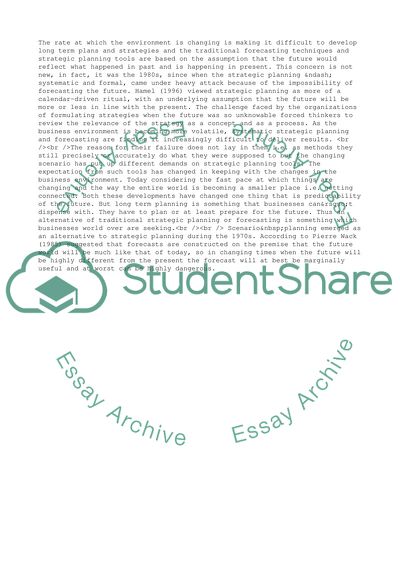Cite this document
(Scenario Planning Case Study Example | Topics and Well Written Essays - 2500 words, n.d.)
Scenario Planning Case Study Example | Topics and Well Written Essays - 2500 words. Retrieved from https://studentshare.org/management/1737244-all-organisations-face-the-challenge-of-formulating-longer-term-strategy-without-knowing-just-what-the-future-holds-how-might-organisations-use-scenario-planning-to-help-them-plan-for-the-future
Scenario Planning Case Study Example | Topics and Well Written Essays - 2500 words. Retrieved from https://studentshare.org/management/1737244-all-organisations-face-the-challenge-of-formulating-longer-term-strategy-without-knowing-just-what-the-future-holds-how-might-organisations-use-scenario-planning-to-help-them-plan-for-the-future
(Scenario Planning Case Study Example | Topics and Well Written Essays - 2500 Words)
Scenario Planning Case Study Example | Topics and Well Written Essays - 2500 Words. https://studentshare.org/management/1737244-all-organisations-face-the-challenge-of-formulating-longer-term-strategy-without-knowing-just-what-the-future-holds-how-might-organisations-use-scenario-planning-to-help-them-plan-for-the-future.
Scenario Planning Case Study Example | Topics and Well Written Essays - 2500 Words. https://studentshare.org/management/1737244-all-organisations-face-the-challenge-of-formulating-longer-term-strategy-without-knowing-just-what-the-future-holds-how-might-organisations-use-scenario-planning-to-help-them-plan-for-the-future.
“Scenario Planning Case Study Example | Topics and Well Written Essays - 2500 Words”. https://studentshare.org/management/1737244-all-organisations-face-the-challenge-of-formulating-longer-term-strategy-without-knowing-just-what-the-future-holds-how-might-organisations-use-scenario-planning-to-help-them-plan-for-the-future.


